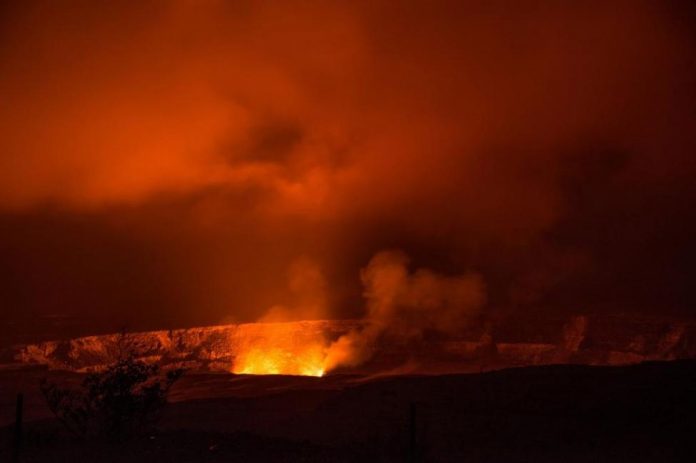
Dec. 13 (UPI) — Some 252 million years ago, nearly all live on Earth vanished. The fossil record suggests some 96 percent of all marine life disappeared, and scientists suspect the magnitude of losses on land was similar.
But until now, scientists weren’t sure what exactly caused the massive Permian Period extinction, an event known as the Great Dying.
Researchers knew a series of volcanic eruptions set off a devastating chain of events, including deadly and disruptive climatic and environmental changes, but scientists couldn’t agree on a smoking gun.
Was it the sudden rise in ocean acidity? Did sulphur and other toxic metals poison the seas? Or did sudden rises in ocean temperatures wipe out almost all marine life?
New models designed by scientists at the University of Washington and Stanford University suggest a rapid rise in ocean temperatures was to blame. According to the complex simulations, the warming event accelerated the metabolism of ocean species at the same time that oxygen levels dwindled. The planet’s marine animals quickly ran out of oxygen — asphyxiation on a massive scale.
Researchers designed models both to predict the impacts of massive volcanic eruptions on ocean temperatures and to simulate the impacts on marine animals.
To ensure the accuracy of their models, researchers simulate the precise arrangement of the ancient supercontinent Pangea.
“The Earth system model we used predicts the exchanges of energy, mass, and momentum between the ocean and atmosphere,” Justin Penn, a doctoral student in oceanography at Washington, told UPI in an email. “It was formulated to simulate the end-Permian by joining the continents into the unified landmass from around 250 million years ago, known as Pangaea.”
“We increased atmospheric greenhouse gas levels in the model to cause ocean warming and oxygen loss,” Penn said. “The tolerances of marine animals to these changes were used to quantify their impacts on marine life. They were estimated by using published lab measurements of these traits in modern species.”
The models tell a story of deadly warming, but most importantly, the models showed where marine warming would have been most dramatic and had the deadliest impact. The simulations also predicted where certain species would become isolated as the oceans continued to warm and oxygen levels dropped.
Animals in the tropics would have been better adapted to warm-water, low-oxygen conditions, and could move toward to the poles as the oceans warmed. Species living farther from the tropics, according to the simulations, were the first to disappear. The fossil record matched the model’s predictions.
“The warming and oxygen loss simulated in the Earth system model match the changes implied by geochemical data from end-Permian age rocks, indicating realistic magnitudes of model climate change,” Penn said. “In particular, the observed temperature of the ocean at the end-Permian is reconstructed from the chemistry of the teeth of eel-like creatures that lived during the extinction.”
It’s the first time scientists have successfully tested the results of a Permian-era extinction model against the fossil record. Scientists described their feat in the journal Science.
In addition to detailing the demise of Permian-era life, the new research can be used to better understand the impacts of warming ocean temperatures on modern species. According to the authors of the new study, by the end of the century, Earth’s oceans will have warmed 20 percent as much as the Permian-era warming. While some species will be able to adapt, others are likely to disappear, just like their Permian relatives.
“Species more tolerant of warm, low oxygen conditions are more likely to adapt to these conditions when they arise under global warming,” Penn said. “In contrast, species that require cold water and/or high oxygen levels are more at risk because those habitat conditions become more rare in a warming climate.”





